Participating Groups | Faculty | Trainees
Graduate and Postdoc Trainees
Our goal is to attract and retain talented and diverse trainees to earn PhDs in their home departments and programs with an emphasis on interdisciplinary training that focuses on sexual development and reproductive behavior. We will also provide advanced training to recent PhDs.

For information on how CTRD has shaped the lives of past trainees and where they are now, click here.
Current Trainees | Trainees: 2015-2016 | Trainees: 2010-2014 | Trainees: 2005-2010
Current Trainees
Predoctoral Trainees

Ali Ossip-Klein: Alison's research investigates the physiological and environmental factors that shape the evolution of sexual dimorphism in color across Sceloporus lizard species. She is particularly interested in the role of color as an aggressive signal as well as the evolutionary causes and consequences of signal loss. Alison explores these questions using behavioral studies in the field and phylogenetic comparative methods in the lab.

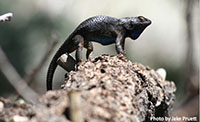

Nikki Rendon: Nikki's work converges on the interactions among ecology, physiology, and behavior. Her dissertation work provides insights into the physiological mechanisms regulating female aggression, and how these mechanisms change with reproductive state and across seasons. As sex steroid hormones are known to mediate the expression of competitive traits and behaviors, she focuses on the specific factors that regulate hormone synthesis and function. Nikki's work bridges multiple levels of complexity by delineating the interactions among androgens, estrogens and their respective tissues of action in order to describe how specific attributes of physiology coalesce to mediate aggression.
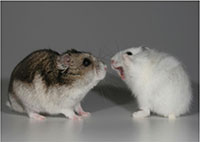
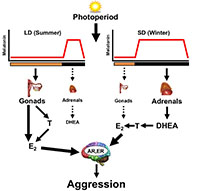

Sam Slowinski: Sam's research focuses on host-parasite coevolution and disease transmission. He studies the effect of antagonistic coevolutionary interactions with parasites on the evolution of host breeding systems in an experimental Caenorhabditis elegans nematode host/Serratia marcescens bacterial parasite laboratory system. Additionally, he works with dark-eyed juncos (Junco hyemalis) in the field in order to assess the mechanisms by which haemosporidian parasites alter the attractiveness of birds to disease vectors.
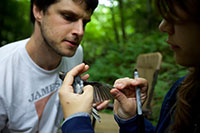
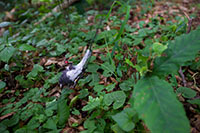
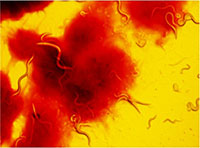

Leah Wilson: Leah's research focuses on the neuroendocrine mechanisms underlying seasonal variation in flocking and aggression. She is interested in investigating the roles that the nonapeptides (vasopressin- and oxytocin-like peptides), vasoactive intestinal polypeptide, and corticotropin-releasing hormone play in modulating the seasonal expression of affiliative and aggressive behavior in male and female songbirds.
.jpg)
.jpg)
.jpg)
Postdoctoral Trainees

Tierney Lorenz: Tierney's work examines the bidirectional relationship between sexual behaviors and symptoms of mood disorders. Her predoctoral work included psychophysiological studies of antidepressant use, sympathetic nervous system activity and genital arousal, clinical trials of behavior and writing-based therapies to improve sexual wellbeing in women with mood disorders, and cross-sectional studies of frequency of sexual activity and immunologic markers in men and women with and without mood disorders. Her post-doctoral research examines how the presence or absence of sexual activity may influence immune response in healthy human females across the menstrual cycle, and if men and women differ in immune response to partnered sexual activity.
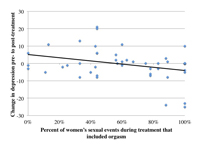


Adam Smith: Adam's research focuses on the evolution of hormonal mechanisms in the brain that underlie the diversification of sexually dimorphic signals. He uses knifefishes of the order Gymnotiformes for this purpose. These fish emit electric fields for environmental detection and social communication, and all species display sexual dimorphism in some parameter of their electric signal. Adam is profiling the expression of hormone receptor genes in two brain regions devoted to controlling sexually dimorphic signals in a comparative panel of four species. By using a set of species that represent multiple axes of signal divergence, he hopes to determine if the molecular mechanisms underlying signal evolution are convergent or divergent.
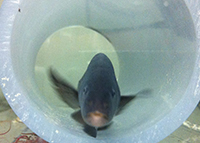
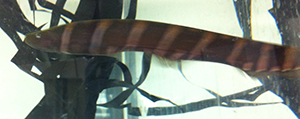
Trainees: 2015-2016

Caro Diemel: Caro's dissertation work investigates to which extent present and developmental environmental conditions affect the production of ovarian steroid hormones that mediate adult reproductive capacity in human females. She explores these questions by focusing on the interaction between glucocorticoid levels and the production of progestogens and estrogens across one menstrual cycle while controlling for past and present anthropometric and socioeconomic factors in healthy pre-menopausal women from Germany. Caro uses liquid-chromatography-tandem-mass-spectrometry to measure these hormones in non-invasively collected urine samples in collaboration with the Endocrinology Laboratory at the Max Planck Institute for Evolutionary Anthropology in Leipzig, Germany.


Amanda Gibson: Alison's research investigates the physiological and environmental factors that shape the evolution of sexual dimorphism in color across Sceloporus lizard species. She is particularly interested in the role of color as an aggressive signal as well as the evolutionary causes and consequences of signal loss. Alison explores these questions using behavioral studies in the field and phylogenetic comparative methods in the lab.

Past Trainees: 2010-2014
Predoctoral Trainees

Christine Bergeon Burns: Christy's predoctoral research examined the evolution of hormone-mediated suites of traits. Hormones are important mediators of life-history trade-offs, and the multiple targets of hormones may facilitate or constrain adaptive divergence. Her research asked whether relationships between the hormone testosterone and phenotypic traits observed in one population of a songbird, the Dark-eyed junco (J. hyemalis), are consistent or different across a divergent subspecies facing different selective pressures. Further, Christy investigated how variation in neural androgen sensitivity may relate to these hormone-phenotype relationships. Christy is now a postdoc at Louisiana State University.
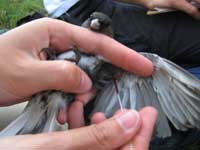


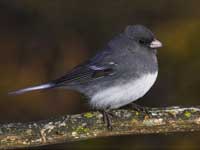
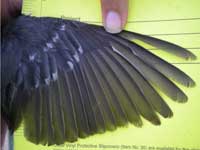

Elizabeth Carlton: Elizabeth's predoctoral research investigated the endocrine signals that regulate seasonal variation in sickness responses and how endocrine signals of metabolic fuel availability mediate energetic trade-offs between reproduction and immunity. She is particularly interested in the roles that glucose, insulin, and leptin may play in these processes. Elizabeth explores her research questions with ecoimmunological techniques and endocrine assays in Siberian hamsters. She is a continuing PhD student at Indiana University.
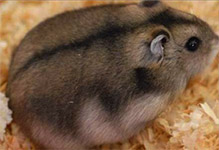
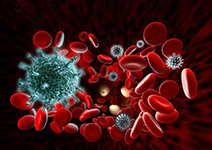

Amy Cash: Amy's predoctoral research used the fruit fly (Drosophila melanogaster) as a model to examine the genetic pathways that regulate gametogenesis and the correct production of female and male gametes. Specifically, her research focused on understanding two critical components of gamete production: the correct establishment of sexual identity in germ cells and the proper maintenance and differentiation of female and male germline stem cells. By studying genes involved in these processes, her research provided insight into the specific genetic pathways that underlie gamete production. Amy Cash Ahmed is now a lab manager in the lab of Gene Robinson at the University of Illinois
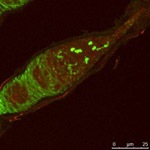
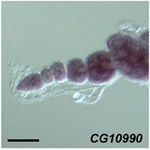

Amy Dapper: Amy's predoctoral research focused on evolution of conditionally expressed traits. Specifically, she examined how juvenile hormone regulates male and sex-dimorphic horns in the dung beetle genus Onthophagus. By better understanding how developmental mechanisms contributes to variation in the degree and direction of horn polymorphisms, her research will help to elucidate important factors underlying the evolutionary origins of morphological diversity. Amy also does evolutionary theory. She is a continuing PhD student at Indiana University.
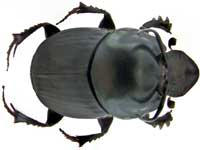
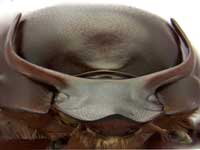


Mollee Farrell: Mollee's predoctoral research examined sex differences in behavioral, physiological, and morphological responses to chronic stress. Specifically, she investigated how gonadal hormones contribute to stress-induced changes in medial prefrontal cortex and amygdala in both males and females. Her research aims to characterize the relationship between sex differences and alterations in structure and function in the corticolimbic circuit due to stress. Mollee is currently conducting postdoctoral research at Northeastern University under the guidance of Rebecca Shansky.
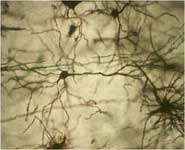



Winnie Ho: Winnie's predoctoral research focuses on the evolution of the physiological mechanisms that underlie sexually dimorphic behavior. Specifically, she is investigating how the neuroendocrine pathways regulating electrocommunication behavior in black ghost knifefish (Apteronotus albifrons), differ across populations that show variation in the magnitude of sexual dimorphism in those electrocommunication signals. Winnie is currently a postdoctoral researcher in the lab of Stacey Smith at the University of Colorado.


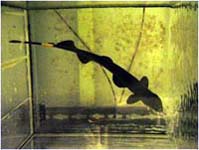
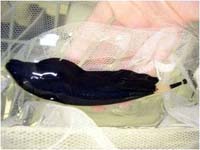

Aubrey Kelly: Aubrey Kelly's predoctoral research focused on the ways in which nonapeptides (vasopressin- and oxytocin-like peptides) and dopamine systems modulate social, reproductive, and anxiety-like behaviors in sex- and phenotypic-specific ways in songbirds. Aubrey is in her final year as a graduate student in the IU Dept. of Biology, and is pursuing a postdoc opportunity that will allow her to study the developmental neurobiology and epigenome of prairie voles.
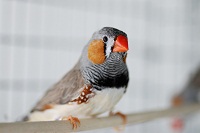
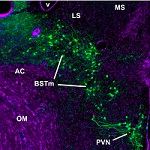

Mark Peterson: Mark's predoctoral research focused on the role of hormone-mediated gene expression in explaining behavioral and physiological differences between the sexes. Males and females share nearly identical genomes, yet often differ dramatically in both appearance and behavior. Understanding the ways in which gene expression explains these differences allows investigation into dimorphism and suggests ways in which species divergence may proceed. Because hormones often differ between the sexes, and correlate with dimorphic phenotypes, it is important to understand their role in developing and maintaining sexual dimorphism and individual variation. Mark received his PhD in 2013 and is now an HHMI post-doc in genomics at Juniata College and Pennsylvania State University.
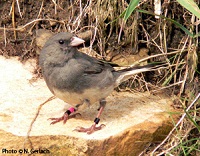
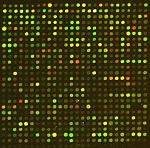
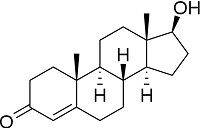

Jakki Petzold: Jakki studies sex differences in electric organ discharges (EODs) and the modulations in EOD frequency and amplitude used as communication signals ("chirps") in the South American ghost knifefish Parapteronotus hasemani. She is interested in how fish perceive and discriminate among conspecific EODs and chirps. She is a continuing PhD student at Indiana University.
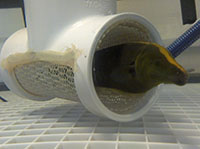

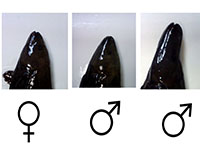

Lauren Rudolph: Lauren's research focuses on the role of estrogens in the development of the spinal nucleus of the bulbocavernosus (SNB), a sexually dimorphic motor nucleus that controls erections and ejaculations in rats. Estrogen-controlled SNB development occurs during a critical period, and her research focuses on the mechanisms by which the estrogen sensitivity of SNB motoneuron morphology is limited to this developmentally restricted critical period. Specifically, she is interested in the roles of estrogen receptor alpha (ERα) and brain-derived neurotrophic factor (BDNF) in mediating estrogen-dependent SNB dendrite growth during the early postnatal period. She is currently conducting post-doctoral research at UCLA under the direction of Dr. Paul Micevych.
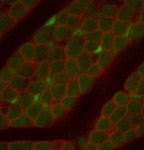
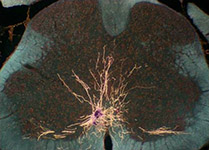

Melissa Toups: Melissa's predoctoral research investigates the process of sex-chromosome formation and the genomic consequences of sex-chromosome evolution. Sex chromosomes are thought to be instrumental in resolving sexual antagonism through their sex-biased or sex-specific inheritance. Melissa's research examines how sexual conflict is resolved by studying evolution of nonmodel sex-chromosome systems, such as birds (ZZ/ZW), monotremes (multiple-X), and the mosquito Aedes aegypti (homomorphic sex chromosomes). Specifically, she studies in gene movement, sex-biased gene expression, and structural changes associated with the evolution of sex chromosomes in these systems.
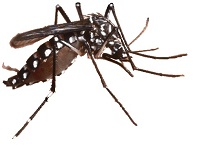
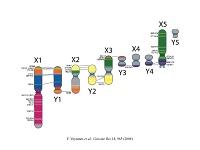
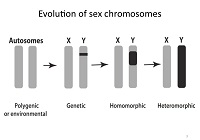
Postdoctoral Trainees

Oliver Beckers: Oliver's postdoctoral research investigates how development and genes coordinate the matched expression of morphology and reproductive behavior, using molecular and behavioral assays. He studies males of the dung beetle, Onthophagus taurus, which express two distinct morphological phenotypes in response to early nutrition: high-nutrition males express large head horns, while low-nutrition males do not develop horns as adults. Males display alternative behavior that is functionally linked to horn expression. Horned males fight for females; hornless males adopt a sneaking strategy. Hornless males are unsuccessful ‘fighters' and horned males are unsuccessful ‘sneakers.' Oliver is studying how this match between behavior and morphology develops.
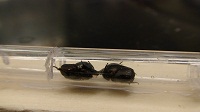
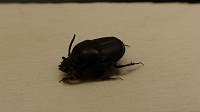

Justin Garcia: Justin is interested in the biocultural foundations of human sexual behavior, particularly social and sexual monogamy. His recent work has focused on the motivational factors involved in romantic and sexual relationships during the developmental period of emerging adulthood. He is co-author of Evolution and Human Sexual Behavior (Harvard University Press, 2013) and co-editor of Evolution's Empress: Darwinian Perspectives on the Nature of Women (Oxford University Press, 2013). Justin is currently Assistant Professor of Gender Studies and Assistant Research Scientist at The Kinsey Institute, Indiana University.

Jennifer Hackney: Jennifer's postdoctoral research used the fruit fly (Drosophila melanogaster) as a model to examine endocrine-immune interactions during development. Specifically, her research focused on understanding the mechanism by which injury to specific tissues leads to a global delay in development (e.g. prolonged larval and pupal stages) characterized by decreased synthesis of the steroid hormone ecdysone. In addition, she examined how injury to adult females affects ovarian follicle development, an ecdysone dependent process. She is now an Assistant Professor at Arizona State University.
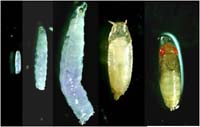
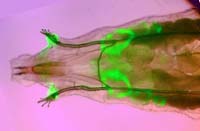
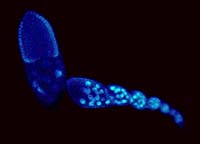

Kim Rosvall: Kim joined the training grant in 2009 after conducting her dissertation work on the evolution of intrasexual aggression in female birds. As a postdoctoral researcher, Kim focusing instead on sex differences in neuroendocrine mechanisms of aggression. At the completion of her postdoctoral training, Kim received a $416,000 grant from the National Institute of Child Health and Development (NICHD) to study how violent and aggressive experiences alter gene regulatory networks in the brain and periphery. Kim continues to study the mechanistic bases of behavioral adaptation/acclimation and how these mechanisms change over evolutionary time as a research-rank faculty member in the Biology Department at Indiana University.
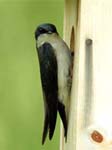
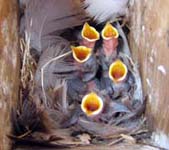
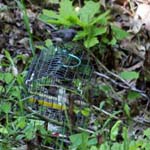
Past Trainees: 2005-2010
Predoctoral Trainees

Jennifer "Jef" Akst: Jef's predoctoral research investigated mating systems and sexual selection in the lined seahorse, Hippocampus erectus. Through a series of controlled laboratory experiments with captive animals, she examined the courtship behavior of this species and explored the mate choice behavior of both sexes. Jef received her MA in 2009 and is currently a senior editor at The Scientist, where she edits the magazine's three monthly features, the biobusiness column, and the careers section and writes for all sections of the magazine and website.

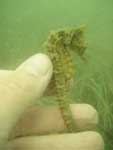


Jonathan Atwell: Jonathan's predoctoral research focused on evaluating how associated hormonal, immunological, morphological, and behavioral traits have responded in integrated or independent ways following a unique colonization event, in which a historically montane-breeding songbird (the Dark-eyed junco) established an isolated population in an urban, coastal environment. This system provides an ideal opportunity to study rapid evolution and adaptive plasticity, and Jonathan is investigating these questions with respect to population differences, sex differences, seasonality, and patterns of trait covariation. Jonathan received his PhD in 2011 and is currently a post-doctoral researcher at Indiana University.

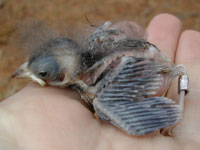

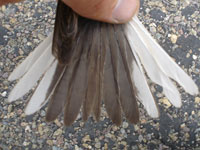

Yaniv Brandvain: Yaniv's predoctoral research investigated the evolutionary consequences of systems of mating, such as inbreeding/outbreeding and monandry/polyandry. He considered how inbreeding affects the probability of fixation of good gene combinations, and also examined the evolution of genomic imprinting under differing mating systems with both theory and data. Yaniv completed his PhD in 2010 and was a post-doctoral researcher at UC Davis. Currently, Yaniv is an assistant professor in the department of plant biology at the University of Minnesota - Twin Cities. A major focus of his research is how the mode of plant reproduction influences plant speciaition, diversity and distribution.




Kristal Cain: Kristal's predoctoral research examined the mechanisms and selection pressures that lead to sex differences in morphology and behavior. She looked at females that are male typical in body size or coloring (or androgynous) to determine is they are also more similar to males in behavior, which would indicate a common mechanism controlling trait expression. She also worked to determine if exposure to androgens during development or in adulthood is driving this covariation, and whether there are consequences for androgynous females' survival and reproductive success. Kristal began her postdoctoral studies in 2012 at Australian National University. Her research there examines the role that ecology plays in shaping female expression of competitive traits, e.g. aggression, song and ornamentation. She is examining how differences in resource availability alters social dynamics, female-female competition, and the strength and direction of selection on females.
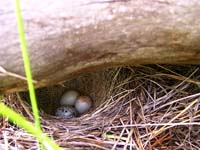
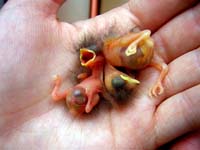
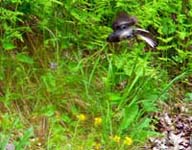


Idelle Cooper: Idelle's predoctoral research focused on the evolution of sex differences, particularly by natural selection, by examining color patterns and ecological niche type in the Hawaiian Megalagrion damselfly phylogeny. This research was completed using a combination of field surveys of the distribution of color patterns and measuring correlated ecological variables, as well as conducting lab and field experiments to identify the selective pressures on color. Idelle received her PhD in 2008 and is currently an assistant professor of biology at James Madison University.




Timothy Greives: Tim's predoctoral research examined how environmentally relevant cues are integrated by organisms allowing appropriate alteration of reproductive status. Specifically, he focused on the neuropeptide kisspeptin, investigating its effects in hamsters housed in "summer-like" and "winter-like" photoperiods. Tim received his PhD in 2009, pursued postdoctoral research at the Max Planck Institute for Ornithology, Radolfzell, Germany, and is now an Assistant Professor of Biology at North Dakota State University.
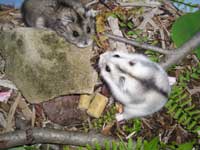
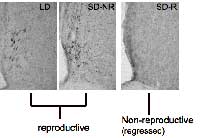


Britt Heidinger: Britt's predoctoral research was designed to investigate whether modifications of the stress response underlie age-related changes in reproductive effort in a long-lived seabird, the common tern. Britt tested whether older parents have higher reproductive performance than younger parents in part because they respond less strongly to stressors. Britt received her PhD in 2007 and was a postdoctoral fellow in the laboratory of Pat Monaghan, Division of Environmental and Evolutionary Biology, University of Glasgow. Britt is currently an Assistant professor at North Dakota State University.


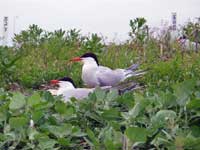

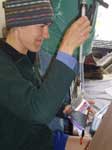

James Klatt: James' predoctoral research examined the evolution of the neural systems associated with social bonding. His research focused on sex differences in the oxytocin and vasopressin family of neuropeptides and their effects on pair bonding and parental care in the zebra finch (Taeniopygia guttata).
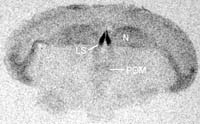
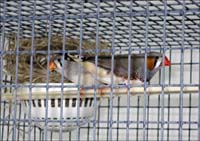

Liz Lehman: Liz's predoctoral research investigated the role of tetrodotoxin (TTX) in rough-skinned newt (Taricha granulosa) eggs as an antipredator mechanism, examining the effect of egg toxicity on reproductive success. Liz received her PhD in 2006 and is currently the Associate Director of Science Programs at the Center for Elementary Math and Science Education at the University of Chicago, where she supports elementary science teachers in their classrooms and develops elementary science curricula.
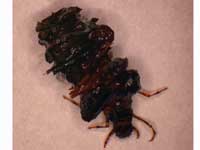
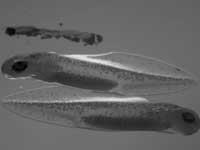
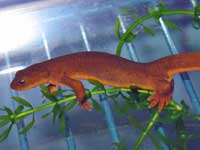

Kathryn Lenz: Katy's predoctoral research focused on the effects of early maternal care on neural and behavioral development. Specifically, Katy examined whether alterations in maternal licking influence the development of the spinal nucleus of the bulbocavernosus (SNB) in rats, a motor nucleus in the lumbar spinal cord involved in the production of male sexual behavior. Katy received her PhD in 2009 and was a post-doctoral researcher at the School of Medicine, University of Maryland-Baltimore. Presently, she is an Assistant Professor in the Department of Psychology and the Department of Neuroscience at The Ohio State University.
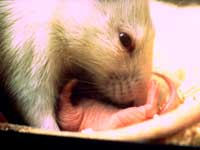
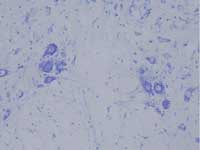


Joel McGlothlin: Joel's predoctoral research focused on the role of sexual selection in shaping patterns of integration among morphological, physiological, and behavioral traits, including plumage, testosterone production and parental behavior. Joel received his PhD in 2007, was a postdoc at the University of Virginia, and is now an Assistant Professor of Biology at Virginia Tech. His current research focuses on the evolution of complex phenotypes in lizards and snakes.
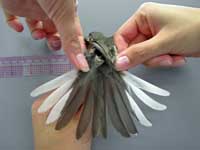
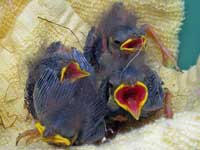
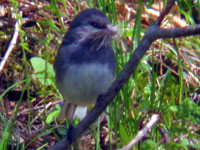

Dawn O'Neal: Dawn's predoctoral research took a comparative approach to investigating potential mechanisms (e.g., immune function) mediating the evolution of sex differences in migratory behavior in the dark-eyed junco (Junco hyemalis). Specifically, her research dealt with the effect of environment (i.e. winter climate and recent warming events) on wintering birds and their decisions regarding choice of winter location and the effects of this choice on winter health and survival. Dawn completed her PhD in 2010 and was a postdoctoral researcher at the University of Georgia. She is currently the Director of Conservation Education and Research at the Huyck Preserve and Biological Research Station in NY, overseeing the research and education missions of the Preserve. Dawn is responsible for making sure the Preserve's formal and informal educational offerings are high-quality programs with a strong base in scientific fact, research, and pedagogy; overseeing and approving all research conducted at the Huyck Preserve; and developing wildlife monitoring programs which provide the basis for the Preserve's conservation policies.

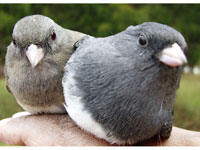


Mayté Ruiz: Mayté's predoctoral research investigated courtship behavior in sagebrush lizards, Sceloporus graciosus. Her research focused on the interactions between male courtship display and female reproductive state. She is also interested in examining the costs associated with courtship in S. graciosus. Mayte received her PhD in 2010 and is conducting post-doctoral research at the University of Puerto Rico at Rio Piedras.

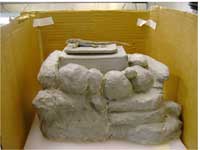
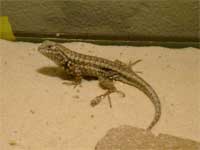

Sarah Schaack: Sarah's predoctoral research focused on the influence of recombination (or sex) on the gain and loss of transposable elements in Daphnia pulex, a freshwater microcrustacean. Sarah's PhD work has bearing on the origin and evolution of sex, the repeated evolution of asexuality, the costs and benefits of recombination for hosts and parasites, and the impact of mutation load as a selective pressure influencing reproductive mode. Sarah received her PhD in 2008, completed two postdoctoral fellowships, and is currently an assistant professor at Reed College. Currently, she and members of her lab work on a variety of questions related to transposable element biology, genome evolution, and the effects of mutation on simple and complex traits.

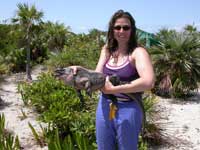
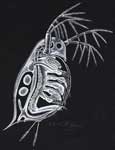

Tom Verhovshek: The goal of Tom's predoctoral research was to further characterize the role of androgens in the maintenance of the neuromuscular system underlying male sexual behavior. Specifically, he was interested in how androgens interact with brain-derived neurotrophic factor both centrally and peripherally to influence motoneuron morphology in the spinal nucleus of the bulbocavernosus (SNB). Tom received his PhD in 2010 and was a postdoctoral researcher at the IU School of Medicine. He is currently the Research Director at Objective Medical, LLC in Indianapolis, Indiana.
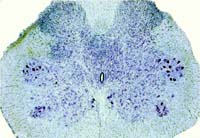
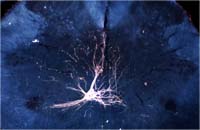
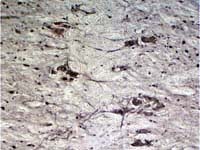

Devin Zysling: Devin's predoctoral research focused on the physiological mechanisms underlying seasonal variation in immune response. She characterized energetic trade-offs between reproduction and immune function, using the Siberian hamster (Phodopus sungorus), a small, seasonally breeding mammal that requires long days (LD) for reproductive activity. Devin received her PhD in 2008 and is a post-doctoral researcher at Cornell University.
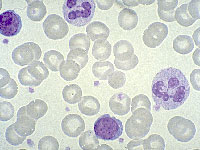
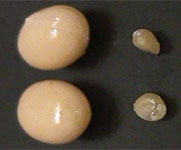

Postdoctoral Trainees

Susannah French: Susannah's postdoctoral research investigated the occurrence and regulation of physiological trade-offs between vital life-history processes; in particular, how energy is allocated between the reproductive and immune systems using the Siberian hamster model (Phodopus sungorus). She was also interested in how organisms regulate and maintain these key life-history processes in the face of a changing environment, especially specific aspects of anthropogenic (e.g., introduction of pathogens; degradation of habitat; altered resource availability) influence using the Galapagos marine iguana model (Amblyrhynchus cristatus). Susannah is now an Assistant Professor at Utah State University.




Heather Rupp: Heather's postdoctoral resesarch investigated the cognitive processing of sexual stimuli using comparative models across species, while combining behavioral, neuroendocrine, psychophysiological, and functional neuroimaging techniques to help uncover the role of the brain in sexual arousal and reproductive states. Heather is a neuroscience consultant was a Founder at Corporate Callosum Consulting, LLC. Heather is currently Vice President of Psychology and Neuroscience at Brain Surgery Worldwide, Inc in San Francisco and continues to be a Research Fellow at The Kinsey Institute for Research in Sex, Gender and Reproduction.
![]()
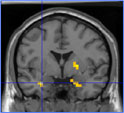

Lynn Siefferman: Lynn's postdoctoral research investigated the proximate determinants and evolutionary significance of blue coloration in the feathers (microstructure) and eggs (biliverdin pigments) of eastern bluebirds. Lynn has completed her postdoctoral studies and is an Associate Professor of Biology at Appalachian State University.

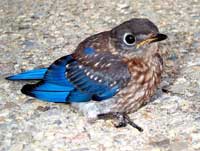
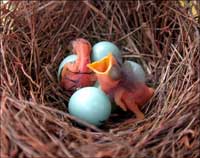

 ©2024 The Trustees of
©2024 The Trustees of